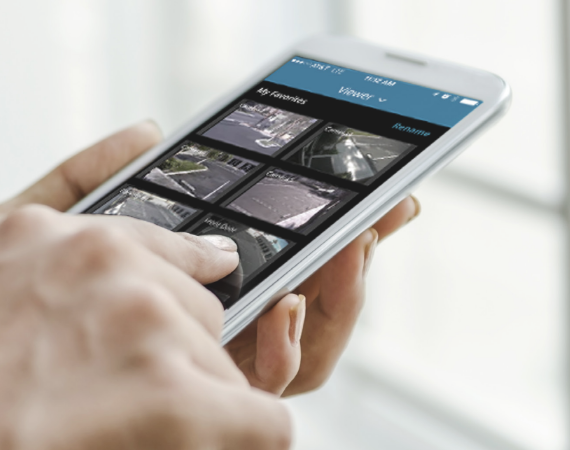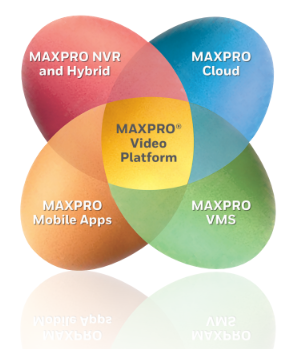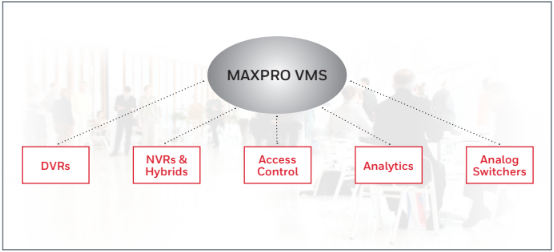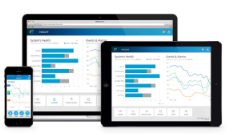VIDEO MANAGEMENT SYSTEM

MAXPRO® Series Video Redefined
PRODUCT DESCRIPTION
- Honeywell’s expanded MAXPRO® family of IP video surveillance solutions includes a powerful
and dynamic video management system, a full line of network video recorders, including hybrid
models, cloud-based Video Surveillance as a Service (VSaaS), and mobile apps.

MAXPRO® Series Video Redefined
Learn One, Know Them All
Open, Flexible and Scalable Video Surveillance Platform

Are you looking for...
- Systems that are interoperable with a wide range of surveillance cameras and encoders, allowing for an open platform.
- A scalable solution that offers entry-level and enterprise solutions with the flexibility to add on as you go.
- A hybrid solution, allowing utilization of existing investments and an easy transition from analog to IP.
- A software-only option, allowing for the flexibility to source your own hardware.
- A cloud-hosted service that can be viewed anytime, anywhere.
- A mobile app for remote video viewing.
- Free software for multi-site viewing.
Honeywell’s expanded MAXPRO® family of IP video surveillance solutions includes a powerful and dynamic video management system, a full line of network video recorders, including hybrid models, cloud-based Video Surveillance as a Service (VSaaS), and mobile apps. It is the first complete and flexible portfolio of IP video management hardware and software with solutions that are scalable for small to large applications. The MAXPRO platform is fully open, incorporating PSIA and ONVIF standards, native integration for third-party cameras and encoders, and RTSP to ensure compatibility with most IP cameras on the market.
MAXPRO is not a single product, but rather a platform on which everything is built. The single interface is the same regardless if you choose a 4-channel software-only option or if you require thousands of channels via a hardware option. Learn One, Know Them All.
...then choose MAXPRO®

Key Benefits
Open
- PSIA and ONVIF Profile S standards support
- RTSP compatibility ensures most IP cameras are supported
- MAXPRO NVR Mobile App for iPad®, iPhone®, iPod® Touch, and Android™
- MAXPRO Cloud App for iPhone, iPod Touch, and Android
Flexible
- Learn One, Know Them All
- Hardware and software options
- Cloud-hosted solutions
- Ease of use
- Hybrid solutions
Scalable
- Entry level to enterprise solutions

MAXPRO VMS is a best-in-class video management software system that seamlessly manages video across multiple platforms from a central location. It is the integration gateway to video, access control, and third-party systems. Depending on your requirements, there are three options which range in functionality—from a free solution that allows you to view Honeywell recorders, to our high-end, full-featured video management system that enables seamless integration with access control and third-party systems.
Maximize Your Investment
MAXPRO VMS brings analog video, network video, access control, and third-party systems together into one command and control interface for maximum flexibility, customization, and integration.

Honeywell’s MAXPRO NVR line includes turnkey solutions—NVR (XE, SE, PE) with 8 to 64 channels and NVR Hybrid (XE, SE, PE) with 16 to 64 channels; and software solutions that range from 4 to 64 channels. It supports ONVIF Profile S and PSIA interoperability standards, RTSP, native integration for third-party cameras—including 360° camera and 4K resolution support—and encoders from Honeywell, Axis and other manufacturers, making it a truly open system. MAXPRO NVR provides easy-to-use desktop clients, web clients, and mobile apps.
MAXPRO® MOBILE
MAXPRO NVR — Security On the Go!
When you need to monitor your business or home remotely, security on the go is essential. The MAXPRO NVR Mobile App from Honeywell enables you to connect to MAXPRO NVRs from any location. Best of all, it’s completely free to use!
With MAXPRO NVR Mobile App, you can perform every day
video surveillance tasks such as:
- Live video view for real-time monitoring of your premises or activities.
- Zoom capability for full-screen viewing in landscape or portrait mode.
- Playback and search functions for recorded video by date and time.
- Snapshot capture of live or recorded video frames for image use.
- Creation of favorite salvos, with up to 3×3 cameras on tablets and 2×4 on phones per salvo.
- PTZ (Pan-Tilt-Zoom) control through presets.
- Alarm monitoring and management capabilities.
- You can download the FREE app from the Apple® iTunes® App StoreSM or Google Play. For older versions (NVR 3.5 SP1 or earlier), search for “MAXPRO Mobile.”
NOTE: For more details, please check the MAXPRO NVR product manuals.
Apple, iPhone, iPad, iPod touch and iTunes are trademarks of Apple Inc.
Android® is a registered trademark of Google.


- Hybrid solution compatible with both analog and IP cameras
- Video on the go with MAXPRO Mobile
- Intuitive user interface with easy-to-use click and drag cameras
- Manage and view video from multiple locations through a single user login
- Alarm and event notification via email
- Automatic feature and service updates
- System health monitoring for cameras or lost communications
- Fast playback of video alarms and events
- Real-time alarm and event notification with clip links
- Scalable storage using off-the-shelf devices
- Single-click selection for multiple viewing options
- Simple search for the most current events
- Advanced search functionality for longer-term events
Feature Highlights:

MAXPRO Cloud Mobile App
The free MAXPRO Cloud app enables remote connection to MAXPRO Cloud, providing security on the go. This allows you to monitor your business remotely. To download the FREE app, visit the Apple® iTunes® App StoreSM and search for MAXPRO Cloud.
Request a Quote
Learn More From
Frequently Asked Questions
Multimode fiber commonly comes in 50/125 μm or 62.5/125 μm core/cladding dimensions, with bandwidth capacities ranging from 200 MHz to 2 GHz, depending on the grade. Multimode systems typically support transmission distances of up to 5 km, making them suitable for short- to medium-range applications.
In contrast, singlemode fiber—usually 9–10/125 μm—offers significantly lower attenuation and effectively unlimited bandwidth, supporting links over 150 to 200 km, especially when paired with optical amplifiers and advanced transceivers.
While singlemode fiber is less expensive per meter, its associated transceivers and equipment tend to cost more than their multimode counterparts. That said, singlemode devices are generally compatible with both singlemode and multimode fiber, whereas multimode equipment works only with multimode fiber.
Let me know if you’d like this turned into a quick-reference table or visual comparison—it’d make a solid inclusion for a fiber deployment guide.
The link budget is the difference between the transmitter’s output power and the receiver’s sensitivity. This budget must account for all signal losses along the path, including:
- Fiber attenuation due to the transmission medium
- Connector losses, such as those at patch panels or equipment interfaces
- Splice losses from mechanical or fusion joints
- Link margin, which provides a buffer for unforeseen variations
The link margin typically ranges from 2–3 dB in tightly controlled environments to up to 10 dB in more variable conditions. It is designed to accommodate:
- Component aging (e.g., light sources may degrade and lose up to 3 dB over time)
- Temperature variations affecting transmitter output or receiver sensitivity (up to 3 dB may be needed for thermal fluctuations)
- Physical cable damage and repair-induced losses (usually minor, but more relevant in harsh or industrial settings)
Always design your system for worst-case scenarios to ensure reliability. However, don’t overlook the best-case condition either—some optical receivers may exhibit erratic behavior if the incoming signal is too strong.
First, verify the optical signal strength along the link. Use an optical power meter to measure the received power at the fiber’s end point. Typical transmit levels range from –8 dBm to –15 dBm, while the receiver sensitivity is around –31 dBm, giving you a link budget of approximately 16 dB. This margin supports transmission distances of up to 10 km on singlemode fiber and about 3–5 km on multimode fiber.
If the measured power falls below the receiver sensitivity, there’s a strong likelihood of issues with the installed fiber. Ideally, initial OTDR readings should have flagged such faults.
If not, inspect the patch cords currently in use for possible defects or misalignment. A frequent oversight is the use of mismatched patch cords.
Multimode fiber types are classified by the ISO/IEC 11801 standard into five main categories: OM1, OM2, OM3, OM4, and OM5. Each type differs in core size, bandwidth, supported data rates, and maximum transmission distances. Here’s a quick breakdown:

- OM3 and OM4 are laser-optimized and widely used in modern data centers.
- OM5 supports shortwave wavelength division multiplexing (SWDM), enabling multiple wavelengths over a single fiber for higher capacity.
- All OM types are backward compatible in terms of connectors, but mixing core sizes (e.g., OM1 with OM3) can cause performance issues.
